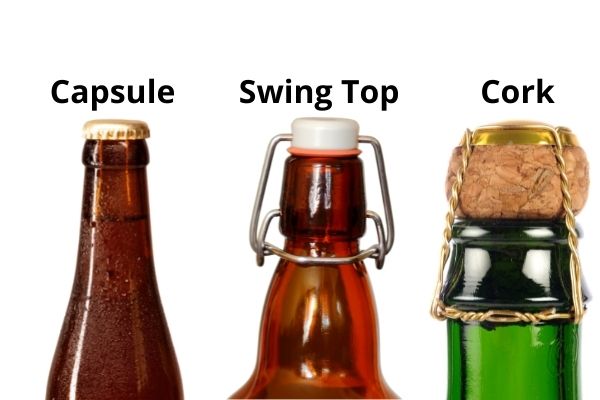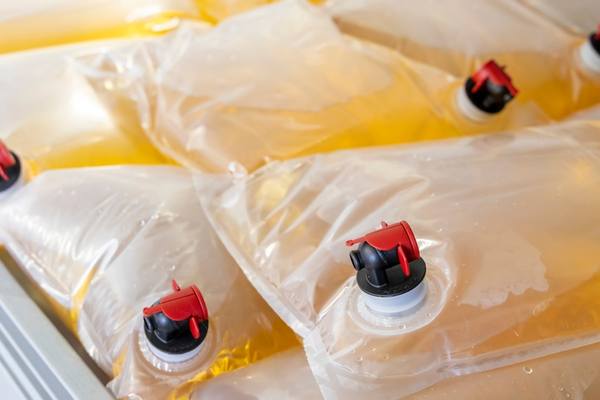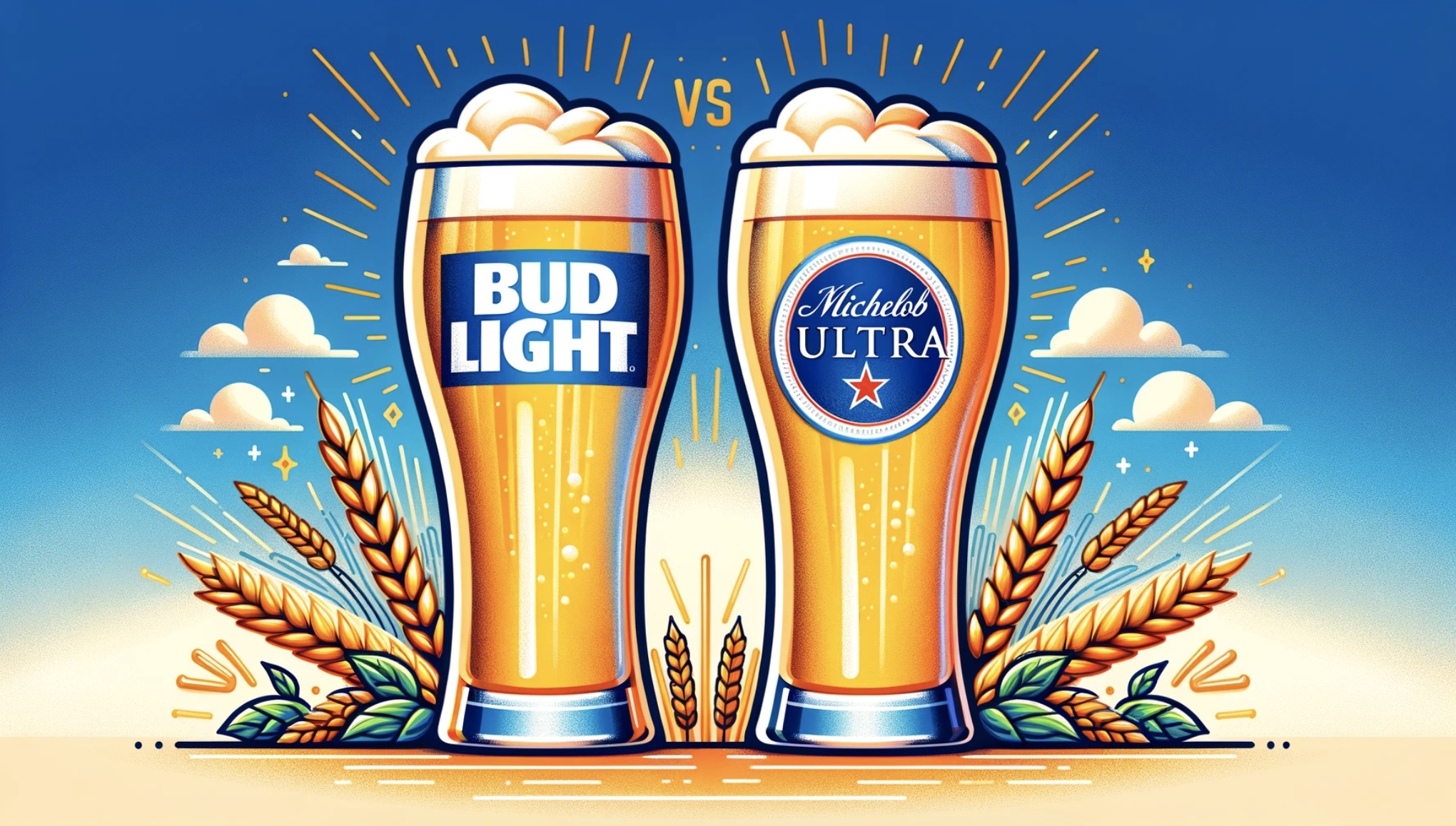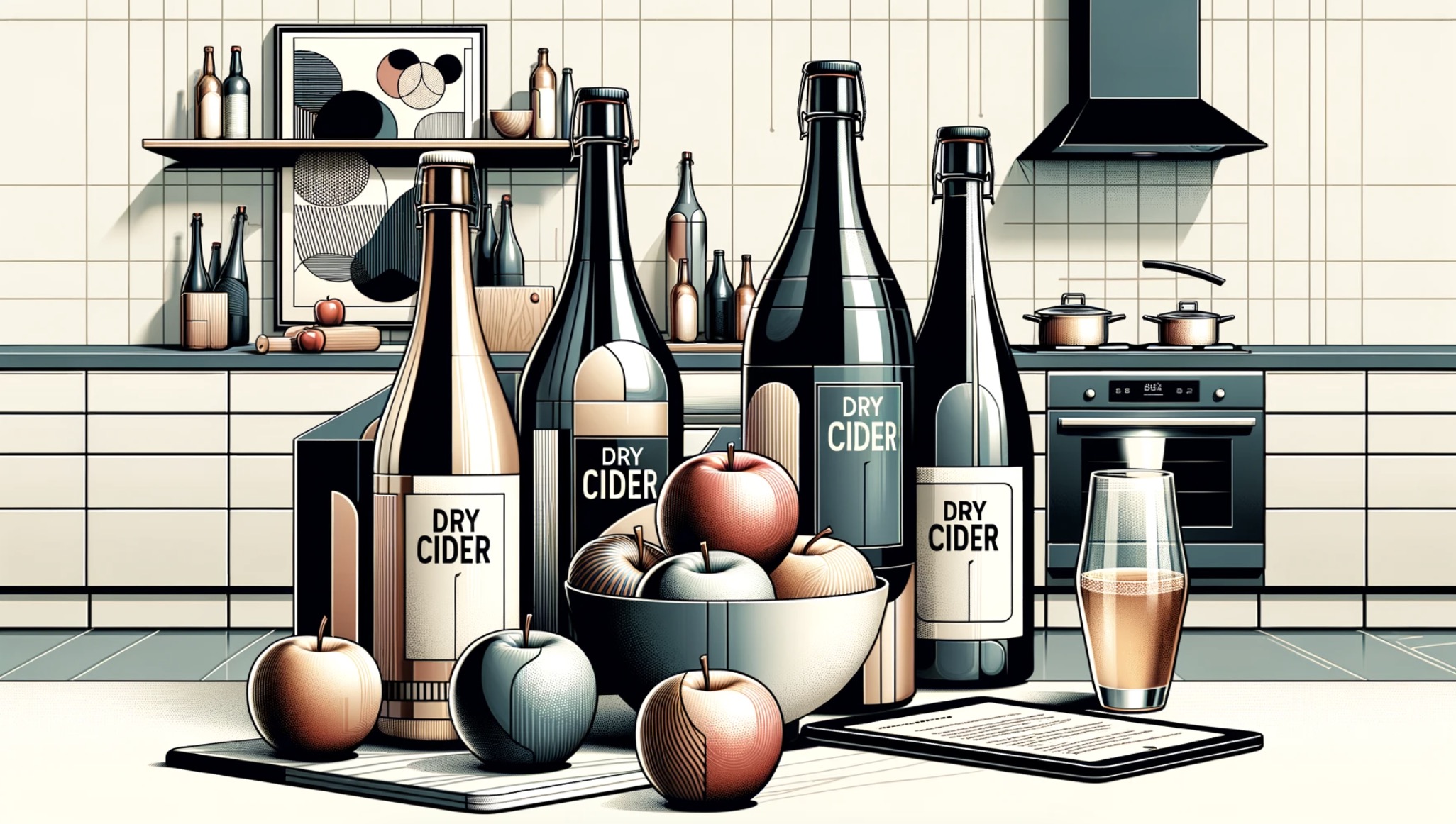Beer storage containers come in a variety of materials. For the most part, the best option is glassware, typically bottles, which will be reusable, airtight, and not give off taste or odors to your beer.
Typically glass bottles are chosen for beer storage due to their high-pressure tolerance and ease of cleaning, but there are also lots of other cheaper and more convenient options that I will get into here. Some, like the wooden barrels, will also contribute to the aging and maturation of the beer.
However, apart from glassware, there are numerous options to consider:
- PET plastic bottles
- Plastic carboys
- Wooden barrels
- Food-grade plastic barrels
- Kegs
- Bag in a box type plastic bags
For example, plastic containers are also practical due to their lighter weight and lower chance of breakage, but they may give off a taste and are harder to sterilize with heat than glass bottles.
Wider openings and bigger containers also make cleaning and storage of larger batches easier, so the shape and size are also important considerations.
Whereas this post was written with beer in mind, everything about the storage of beer and cider also applies to the storage of cider and any type of Pét-Nat, wine or champage.
What do you store homemade beer in?
Beer is most commonly stored in glass bottles with either a normal capsule or a cork. The corks are usually used when beer is meant for long-term storage as it is considered to be more airtight than a capsule.
Whereas glass bottles are often preferred, you may also store your beer in plastic bottles or even oak barrels if you prefer, and each method will affect longevity and taste differently.
Ok, but before we look into all the options for storage containers, let’s look at some crucial details about their closing mechanisms that I will mention throughout this article.
When you have chosen a storage container for your beer, you also need to consider the closing mechanism for your bottle.
Here, the most popular options are capsules, swing-top lids, and corks.

Capsules:
Capsules are a great and cheap way to bottle your beer. They provide a tight seal that keeps the beer fresh and prevents it from leaking. They are easy to apply and allow you to bottle your beer without having to buy expensive corking equipment or swing-top bottles.
Swing-tops:
Swing-top lids are a great option for bottling because they provide a tight seal that helps to keep the contents fresh. They are also easy to open and close, which is convenient when you need to access the contents of the bottle quickly.
Corking:
Corking helps to preserve the beer in the bottle and is actually the best way of preventing oxygen from entering and spoiling the contents. It also provides the best long-term airtight seal that keeps carbonation in, ensuring that your beer is as fresh and bubbly as when it was first bottled. And it looks quite nice as well…
Screw caps:
Screw caps are another method usually used when storing beer in plastic bottles. These can be beneficial because the bottles are easy to open and close and no special equipment is needed to apply a screw cap.
However, the downside is that the bottles will be more likely to explode upon excessive pressure build-up, whereas a capsule or cork may pop out before the bottle breaks.
Beer can also be stored in larger bottles or demijohns, but make sure to rack the beer before long-term storage to avoid the negative effects of degrading yeast leftovers on the taste!
Glassware is usually the preferred option
When making beer, glass containers are a great way to store it. They keep the fermented juice free of any chemicals and oxygen that may disrupt the taste of smell, which helps to preserve the freshness of the product.
To store beer in any contained properly, you’ll need an airlock or a sealable lid. If you choose a glass beer storage container, make sure that the beer is done (or almost done) fermenting so that the pressure does not reach a point where the glass will shatter under the pressure of the CO2 build-up.
Different types of glassware that may be used to store beer are:
- Empty beer bottles
- Empty soda bottles
- Swing top bottles
- Champagne bottles
- Wine bottles (for still beer)
- Smaller carboys
A wooden barrel adds character to the finished product, but it is more expensive and requires more maintenance than food-grade plastic. Plastic also obtains scratches easily and is harder to clean than glass. But the glass is ideal for storing beer, as it’s not prone to oxidation.
Old beer or soda bottles
Old beer or soda bottles are usually made from tinted glass and comes in many different sizes from 330 and 750 ml. You can often find them for free and, at least in my case, my friends are eager to donate them if they get one or two back filled with delicious homemade beer!
Old beer bottles are a great option for beer storage because they are easy to get hold of and are airtight and will keep the beer fresh for a long time.
They are also environmentally friendly because they can be reused hundreds of times without failing their purpose.

They are resistant to heat so they are easy to sterilize so that no contamination ends up spoiling your precious homebrewed beer.
The only downside to using glass bottles is that you will usually need to apply a crown capsule to close them off. So unless they come with a screw cap or a swing top, you will need to buy a beer bottle capping machine.
Swing-top bottles
Swing top bottles are an easy and super practical way to store your homemade beer. These bottles feature a tight seal that prevents the carbonation from escaping, while still being easy to open and reclose.

Swing top bottles are one of the most popular options for bottling beer. While they are more expensive than re-used beer bottles, swing-top bottles are much more practical as no additional capping equipment is needed.
Swing top bottles are dishwasher safe and do not require a separate capper. They also are not fragile, but you should always clean them thoroughly before using them.
They are also great to recycle. You can easily find many different styles of swing top bottles at your local thrift store, but these bottles are not inexpensive although often more so than recycled beer or wine bottles.
However, before you begin bottling your beer, you should make sure that you use the thicker types made for carbonated beverages.
Champagne bottles
Champagne bottles are the classic choice if you want to take some delicious craft lager beer to a party or impress at a gathering with friends. They keep the beer fresh for a long time and are lightweight enough to carry with you no matter where you go.
Champagne bottles are also safer than beer bottles because they can withstand higher pressure, and therefore your secondary fermentation can proceed for longer than in a thin beer or soda bottle. This means that you can also get some more powerful sparkling beers that almost resemble champagne!
The way to seal a champagne bottle can be a positive and a negative thing. While a champagne bottle can be sealed with a crown capsule (the 29mm sized ones) they are often associated with corks.
A cork gives a classy feel to the bottle and some beer makers prefer corks over capsules as they supposedly last longer, but I have found no concrete evidence of that.
But they can be a pain to open and unless you can get your hands on a Champagne corker, it is not trivial to cork a champagne bottle.
Real champagne makes first applies the capsule and then lets the beer or champagne go through the process of “disgorging” to get rid of the yeast produced during the secondary fermentation, after which they put in a cork for the final product.
Plasticware is also a great storage option for beer
If you are considering making your own beer, you will want to get some good containers. You should avoid using metal containers and instead use HDPE plastic. The reason is simple: HDPE is a higher-density plastic that is completely airtight and will prevent oxidation.
- PET plastic bottles
- Plastic carboys
- Food-grade barrels
- Bag in a box type plastic bags
However, you should keep in mind that plastic is softer and somewhat harder to clean than glass. As such, you should make sure that your containers are airtight and clean.
You can clean your containers by using standard cleaning supplies, such as bleach and vinegar. However, cleaning inside your storage container can be more difficult without specialized equipment.
The materials used for beer storage should be BPA-free, but usually, there are no BPAs and similar plastic softening compounds in hard plastics.
So if it bends easily, and gives off taste, don’t use it!
Also, you should clean the containers well with gentle cleaning agents instead of boiling water as I would usually recommend for glassware.
You can also use long brushes for this purpose. The best type of brush for cleaning carboys and similar is the one that has a flexible tip that can make it all the way into the bottle.
Be sure to avoid containers with too many larger dents or scratches on the container as these may attract bacteria and are hard to clean out.
PET screw cap bottles
Polyethylene terephthalate is a plastic used to make bottles for sodas, water, and, indneed, beer and beer. They are most commonly clear but they can also be made in various colors, typically brown.
PET bottles are usually sold in 500 ml and 1500 ml sizes, which is ideal for storing and transporting your homebrewed beer if you are distributing it to your friends or selling it at a farmers’ market or another local artisan outlet.

The advantages of using PET bottle is that they are light, long-lasting, and suitable for carbonated beverages.
The PET bottle is also very robust which means it can withstand falls, bumps, and knocks and it won’t crack easily which makes it great for transporting beer.
The main disadvantage of PET bottles is that they are less resistant to heat and they don’t seal the same way as crowned glass bottles do. They do seal tight enough though and I have never had any concerns about the beer or pressure leaking from a bottle.
However, one concern of screw caps is that they are so tightly fastened that if the CO2 pressure is too high, the whole bottle will explode rather than just the crown cap or cork coming off.
Another thing people might say is that plastic bottles are not “elegant” enough for their fine homebrew, but that is very subjective and personally, I do not mind much unless I make a batch for a very special occasion.
Bag in a box type plastic bags
These plastic bags are the closest you can get to using just a plastic bottle. They are very compact and airtight and they will save your beer from light exposure so that it is not oxidized.
Bag In Box type plastic bags have the advantage of convenience and they take up minimal space when not in use.
Not only can you store them easily you also don’t need any special equipment to use them such as the cappers and corkers you need for the bottles. If you want to save your precious beer, but don’t want to bother with glass bottles, bag in a box is a great option.
The only disadvantage is that they are not great for heavily carbonated beers, but the right type of bags can actually withstand a lot of preassure!

However there are some disadvantages to using them too. They are heavier objects than glass bottles and the storage life is probably not as long as a glass bottle. Also, as they are not glass, they are much easier to break and harder to sterilize.
Also, if not stored correctly they can lose their shape and integrity so that your precious beer can end up leaking out.
Kegs for professional serving
A keg is a large vessel usually made from stainless steel or aluminum that can store a relatively large amount of beer, but usually around 15 gallons.
Kegs are often used to store beer in bars and restaurants. They are airtight and will keep the beer fresh for a long time. Kegs are also environmentally friendly because they can be reused hundreds of times without failing their purpose.
The only downside to using kegs is that you will usually need to apply a tap to dispense the beer. Taps can be expensive, so if you are planning on storing just small amounts of beer, kegs may not be the most cost-effective option.

Usually you would invest in a keg if you are intending to make beer for selling at festivals or serve at a party to friends. They are easy to move around and are quite neutral so they will not change the taste of your beer.
Kegs are considered the best option for short-term beer storage because they keep the beer fresh and carbonated. You can also use them for force carbonation of beer as a keg can withstand a very high pressure.
The downside to using kegs for beer storage is that they are not very easy to serve from and they are also quite expensive. They are also bulky and difficult to sterilise.
Wooden barrels age and mature the beer
Wooden barrels are the traditional and natural way to store beer. They are also extremely popular with fruit wine makers because they give lovely flavours to the beer when the wood from the barrel seeps into the beer.

The downside to using wooden barrels is that they take a long time to prepare (they have to be soaked and ideally burned inside!) and are not always suitable for beer that you intend to drink soon after fermentation.
They tend to be harder to clean and sterilize so when it comes to beer that needs to be drunk quickly, you will probably be happier with plastic or glass bottles.
But, if you are feeling patient and want to taste the advantages of aging beer, then oak barrels are the way to go!
Oak barrels give the most character to your beer
Oak barrels are great for storing beer. If you have the cash, you may be able to find them for free or very cheaply from a local winery or micro-brewery.
If buying new barrels from a beer micro-brewery or winery, consider asking them to give you their old barrels. They often have hundreds of these lying around, they are usually for free, and all you need to do is ask them.
You can often find used barrels for free or very cheaply. So if you don’t fancy paying the relatively high prices demanded by most beer micro-breweries and wineries, be sure to keep your eyes peeled whenever you can!

It’s difficult to tell what types of barrels are best. However, french and Spanish oak (like that used to age wine in burgundy and cognac regions respectively) are said to be among the best for beer and cider maturation.
Wooden barrels really do contribute a lot to the flavor of beer, and if you were to buy an old wine barrel, a single sniff will probably give you an idea of how many characters oak can add to a beverage.
I personally use oak barrels for storing my beer and I have never had a bottle go bad yet. Best purchase I ever made.
Plastic barrels are also available from some suppliers. These are not very attractive in appearance, but they will last a very long time and are a lot more durable than wooden ones.
Recycled food-grade barrels and carboys
Recycled food-grade barrels are made of high-density polyethylene and are generally available in 40-gallon sizes and comes in metal and plastic versions.
They mimic the size and function of oak barrels, without the weight, taste, and expense. These barrels are a great choice if you’re looking for a durable, affordable alternative to metal and wood.

There are several types of beer storage containers, and each one is ideal for different purposes. These containers should be filled as much as possible, but not so high that they can’t be sealed.
If you’re using plastic containers, make sure they have an airlock. If you’re using stainless steel containers, look for ones with holes.
While food-grade barrels are an excellent choice for storage, there are a few things to keep in mind before making your purchase.
First of all, you must check that they are made of HDPE plastic. If they’re made of thin plastic, it’s possible that oxidation will occur or that they are not cleaned properly for long term storage, which will spoil your beer.
So keep in mind that if the beer does not turn out as expected, you will need to complete several rounds of cleaning and sanitizing the carboys before you can reuse them.
Plastic carboys
Carboys are containers that are often used for fermenting beer. They come in different shapes and sizes and are made of either glass or clear plastic. Clear plastic carboys are lightweight and cheaper than glass versions.
The main disadvantages of using plastic carboys for storage are that they are usually thick enough to be sterilized using boiling water and that you do not have to fill as many to store large amounts of beer.
However, plastic carboys can also be washed and reused, which is an advantage over glass bottles.
Many homebrewers use plastic carboys for storing beer, cider, and wine. There is not much difference between using glass or plastic for beer storage as both are impermeable to oxygen and can keep the beer fresh for a long time.
Where should I store my beer?
Another important factor influencing the shelf life of beer is of course the storage conditions such as temperature, light and humidity.
In theory, some beer can be stored for decades and even centuries like some wines can.
However, this will only be the case for highly alcoholic beers that have been stabilized well with sulphites, filtration or even pasteurization.
Both the internal “bottle” environment and the external “room” environment will matter a lot for how well the beer ages with time.
If stored in wooden barrels, air will slowly get through to the beer and therefore it is not advisable to store beer for more than a few months like that unless the beer is still actively fermenting.
In that case the produced CO2 will displace the oxygen and the beer can therefore be stored for longer in a less airtight container.

For long-term storage, an airtight bottle and a cold environment is preferred. A storage temperature below 50°F (10C) is usually preferable, but even colder will only extend the shelf life.
However, for optimal development and drinkability, storage at normal basement temperatures is fine if the beer is consumed within a few years after bottling.
Conclusion
Glass containers are the best option for storing beer. They are airtight, easy to clean, and durable. However, you will need to invest in some capping equipment but your beer will last longer.
Swing top bottles are a great second choice because they are easy to use and don’t require any special equipment.
Champagne bottles are also a good choice for storage, but you will need a corker. Wine bottles are another option, but they are more difficult to seal.
Plastic containers are a good option for large batches or for long-term storage, but you need to make sure they are made of HDPE plastic and that they are airtight.
Wooden barrels add character to the beer, but they’re more expensive and require more maintenance.




